
Canning Supplies & Equipment Essentials
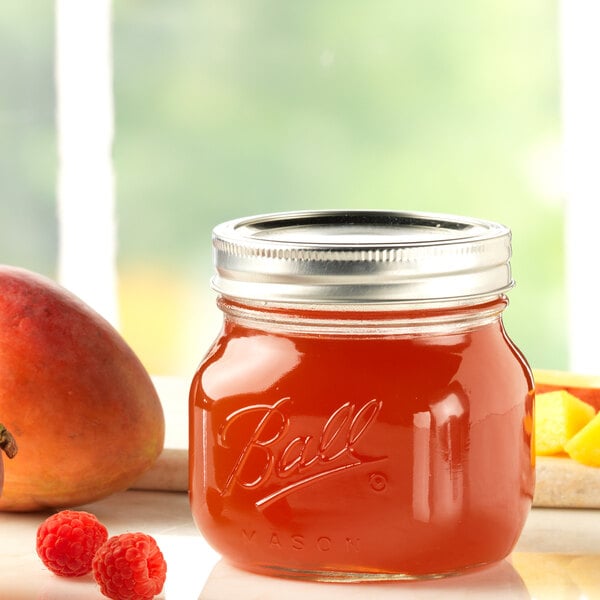
How to Can Food
- Food is placed into glass canning jars and sealed using lids and bands. A small area of space between the food and the lid called headspace is left empty.
- Jars are placed into a canner and cooked, or processed, to kill bacteria.
- Contents in jars start to expand, causing a pressure difference between the jar and the area outside of it.
- Gasses vent from the jar creating a vacuum seal that does not allow air to enter the jar, thus preventing the food from spoiling.

To ensure all food remains safe and does not spoil, it is important to follow all recipes exactly without variation. Changing any ingredient in a recipe can potentially cause the acidity level to change, which may cause spoilage and inedible products.
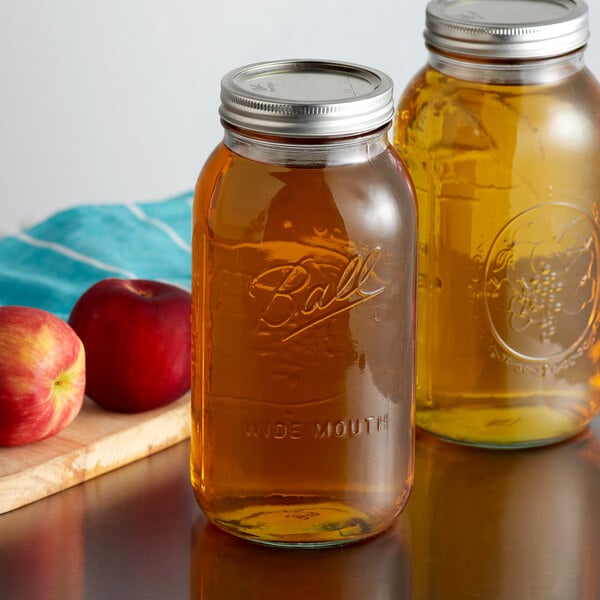
How to Store Canned Food
In order to avoid harmful toxins and bacteria from entering your processed jars, it is important to make sure they are being stored properly. Most lids and jars will keep food shelf stable for at least 12 to 18 months when stored properly, but it is always best to follow manufacturer recommended guidelines.
Avoid direct sunlight
Food in processed jars can break down in nutrient value over time if exposed to direct sunlight
Avoid stacking jars
Jars should not be stacked on each other as the weight of the top jar can unseal the lid of the bottom jar
Store without bands
Bands can trap moisture, causing rust and bacteria growth, and can prevent you from noticing unsealed jars
Label and date every jar
In order to ensure you are identifying properly rotating product, always label and date every jar after it is processed and ready for storage
How to Store Canned Food After Opening
After opening, shelf life on canned food varies but usually will last between a few days to a few weeks depending on the food item. Most opened jars can be stored in a refrigerator just as long as factory-made items but should always be stored without the bands as they can trap moisture which causes rust. Food can be transferred to a food storage container or can be stored in the jar with a reusable lid.
Picking the best style of canning jar to use is often a personal preference and depends on the final look you want for your product. All jars are versatile and have a wide variety of uses beyond canning. Jars can be used for crafts, hobbies, and beverage glasses but can also be used as decor, such as vases and candle holders. Most types of jars will come in both regular mouth and wide mouth sizes.
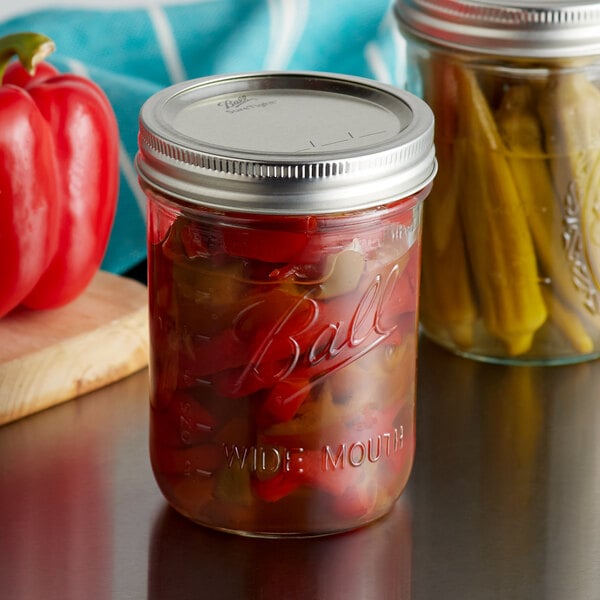
- Clear with the manufacturer’s logo raised on the glass
- Feature measurement gradations on the side
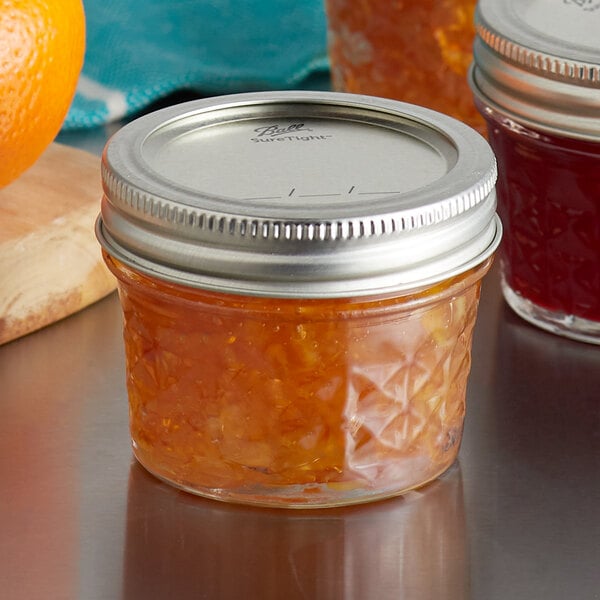
- Feature a raised diamond-like texture
- Provides extra grip while adding a sophisticated look
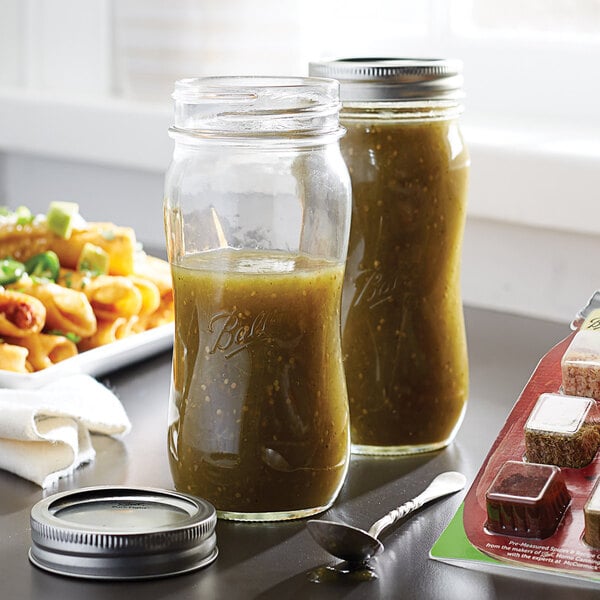
- Features a spiral texture
- Adds a unique pattern and enhanced grip
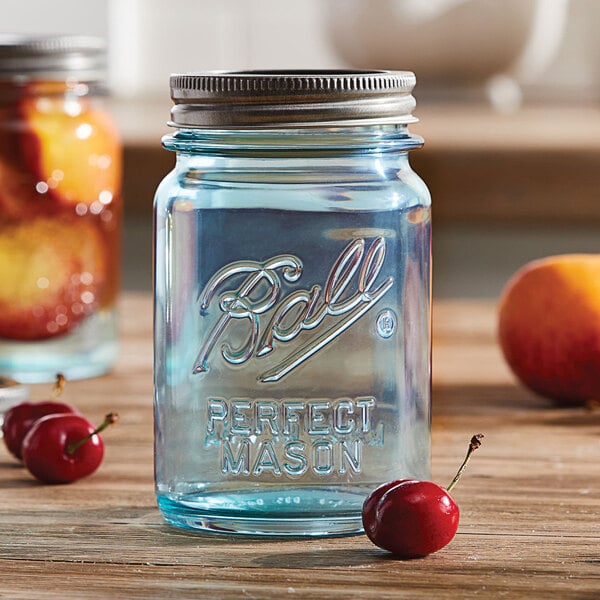
Aqua
- Made of blue tinted glass
- Provide an old fashioned look
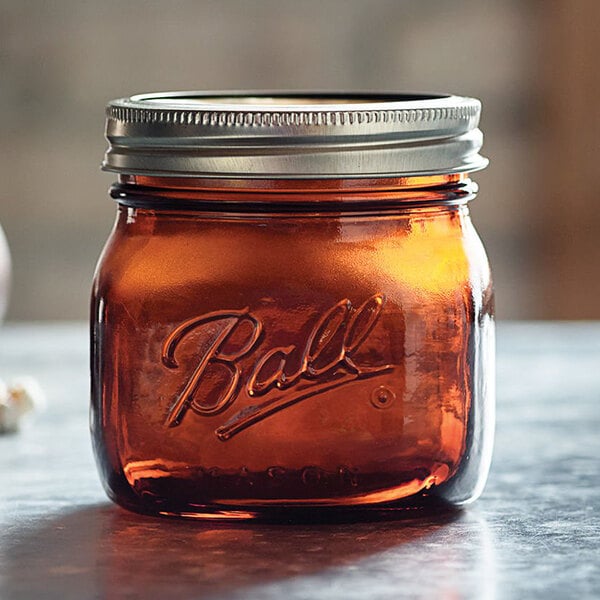
Amber
- Blocks out 99% of UV light
- Allows food to last longer
Frequently Asked Questions
Can any mason jar be used for canning?
No, not all mason jars are able to be used for canning. Jars need to be specifically manufactured for canning so they are sturdy enough to withstand the internal vacuum seal without breaking. Using improper canning jars can result in glass breakage and product loss. When in doubt, double check manufacturer literature and instructions.
Can you freeze mason jars?
Yes, some mason jars can withstand freezing. In order to avoid potential shattering, only use jars specifically designed to go into the freezer. Leave half an inch of headspace to allow for expansion of food.
Can you microwave mason jars?
Yes, glass mason jars by themselves can be microwaved for short periods of time, if needed. Since the jars are glass, they will absorb heat in the microwave, making it potentially dangerous to touch with bare hands. Always use caution when handling hot items. Lids and bands should never be microwaved, since they are made of metal.
Canning lids come in two main styles - regular mouth and wide mouth. Every lid will feature a solid, rubber seal on the underside that creates the vacuum seal when processed. On the top of the lid, there is a small raised circle that will invert when the jar is properly processed.
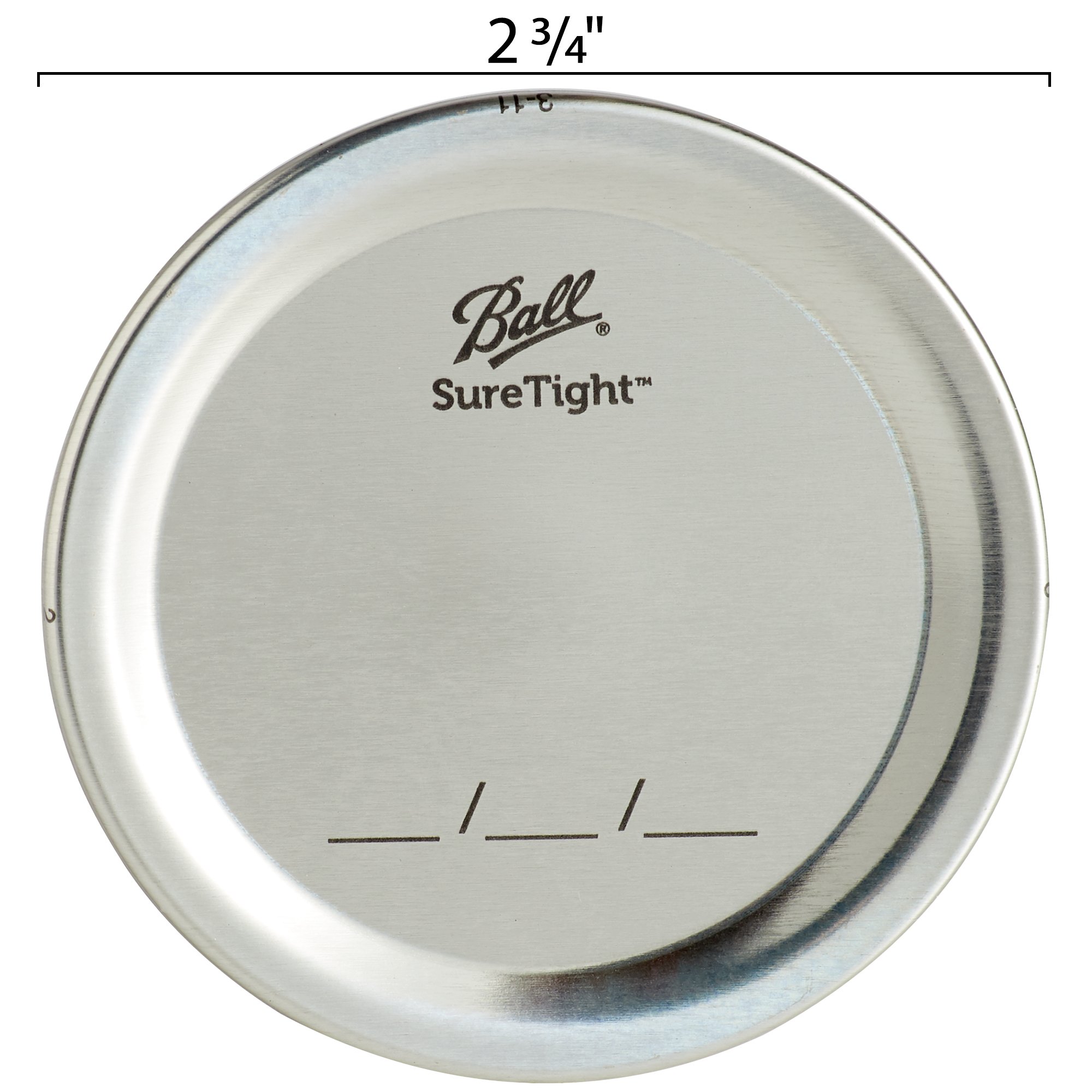
- Diameter: 2 3/4"
- Perfect for jams, jellies, and thinner sauces
- Best for foods with smaller chunks
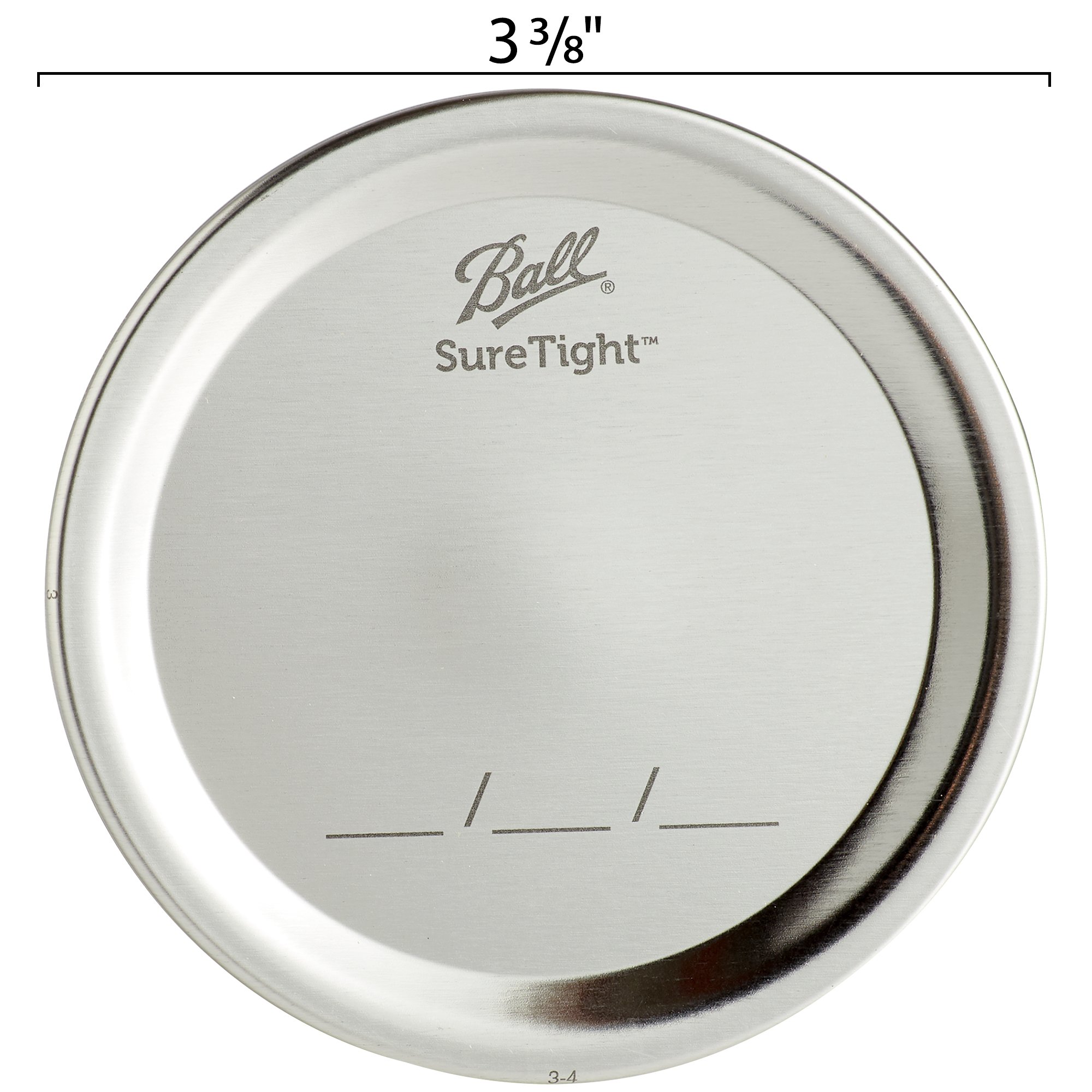
- Diameter: 3 3/8”
- Perfect for thick soups, stews, and whole fruit
- Accommodates larger utensils
Can you reuse canning lids?
No, always start with a brand new lid for safety, as lids should never be reused. Before canning anything, always check the rubber seal on every lid. Discard any seals that are broken or look irregular. Bands can generally be reused as long as they are still in good condition and are not rusty. Processed jars should always be stored without bands as they can trap moisture and can make unsealed jars look sealed.
Commercial Canning Equipment
There are two types of canning methods: water bath canning and pressure canning. Each method has their equipment and is better suited for some types of foods than the other.
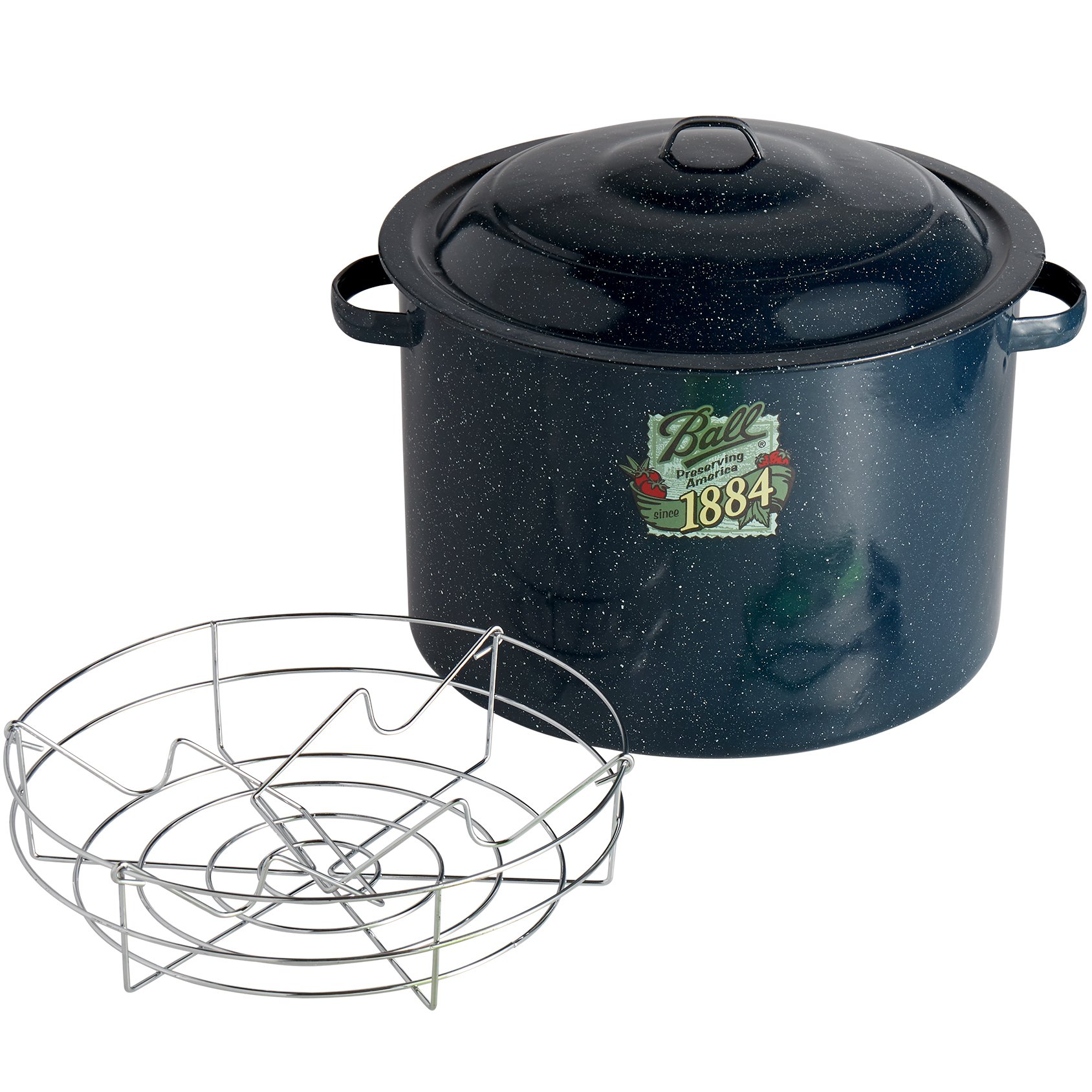
Water Bath Canning
Water bath canners are essentially giant pots that can hold multiple jars at once. Once the jars are added with an additional 1" to 2" of water over the top of the jars, the water is brought to a rapid boil. The jars process for at least ten minutes but can process longer depending on the recipe. The boiling process, coupled with the acidity of the contents, will safely preserve the food.
- Easier to use than a pressure canner
- Faster than pressure canning
High Acidic Foods: most fruits, pickles, some vegetables like tomatoes
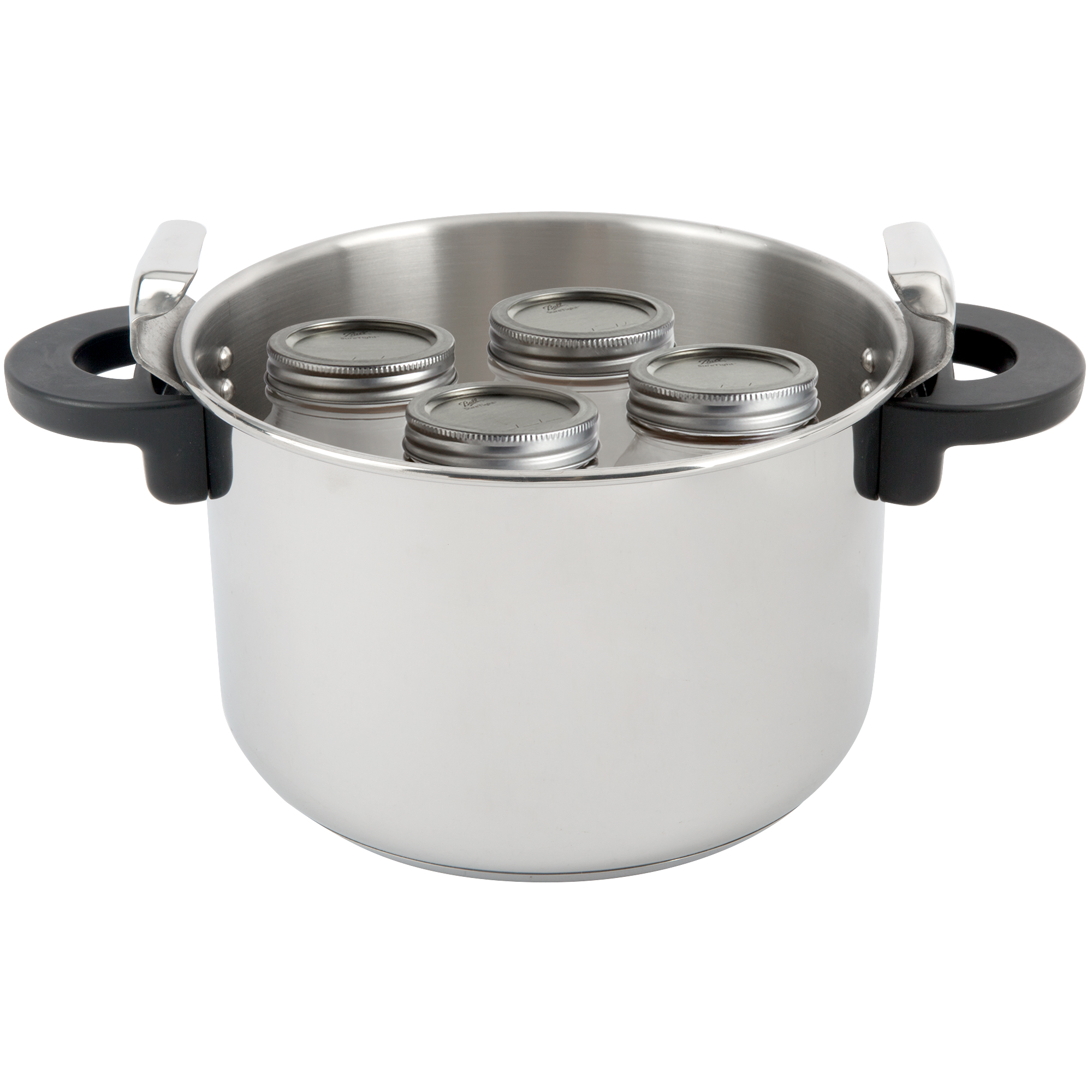
Pressure Canning
Pressure canners work similar to a pressure cooker by creating a high internal pressure from steam. After loading the jars into the canner, either twist the lid shut or use its wing nuts to lock it. Once the water inside is brought to a boil, pressure builds from the water evaporating into steam. The jars will process at a specific pressure and time depending on altitude. This increased pressure can better destroy harmful toxins, meaning it is the only option for canning low acidity foods.
- Can be used to can all types of items, not just acidic foods
- Uses less water than water bath canners
Low Acidic Foods: meats and seafood, most vegetables, most soups and stews
What Size Canning Jar Should I Use?
Determining the right size jar to use is important as jar size can affect processing time. Smaller jars can process faster than larger jars. Additionally, it is important to consider what is going into the jars. Thicker foods as well as anything with larger chunks will usually work better in wide mouth jars as opposed to regular mouth, as it is easier to scrape out the contents.
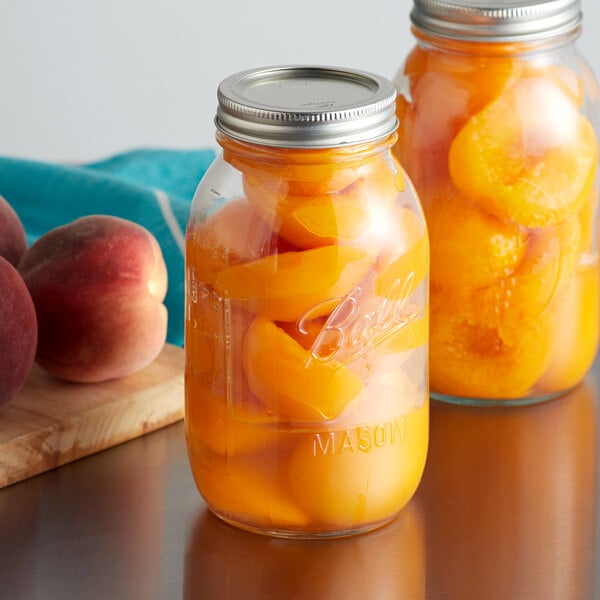
- 4 oz. (Quarter Pint) - Jams and jellies, condiments and sauces
- 8 oz. (Half Pint) - Jams and jellies, preserves, pizza sauce
- 12 oz. - Jams and jellies, relishes, sauces
- 16 oz. (Pint) - Sauces, thinner soups, sliced vegetables
- 32 oz. (Quart) - Fruits and vegetables, pickles, soups
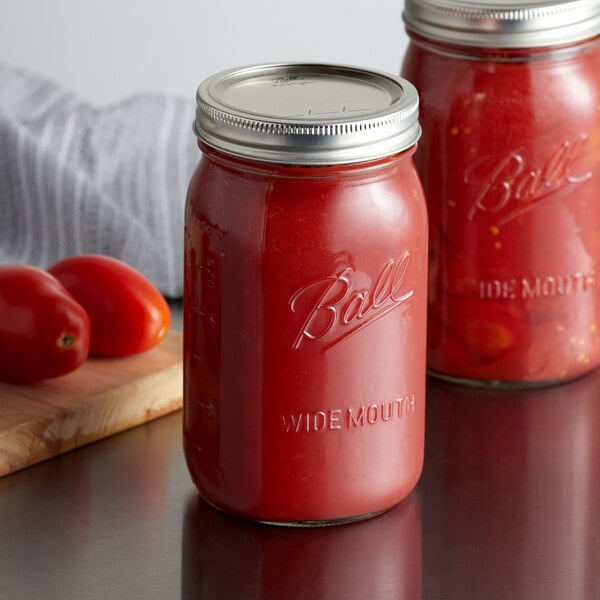
- 16 oz. (Pint) - Salsas, sauces, fruit-based butters
- 24 oz. - Pickles, thick soups and stews, sauces
- 32 oz. (Quart) - Fruits and vegetables, soups and stews
- 64 oz. (Half Gallon) - Fruit juices
From pectin for making jams and jellies to pickling salt, there are several food canning supplies and accessories you can use to streamline your canning operation, make the process easier, and help maintain proper food safety. Here are a few recommended items that you may need to add to your canning supplies list.
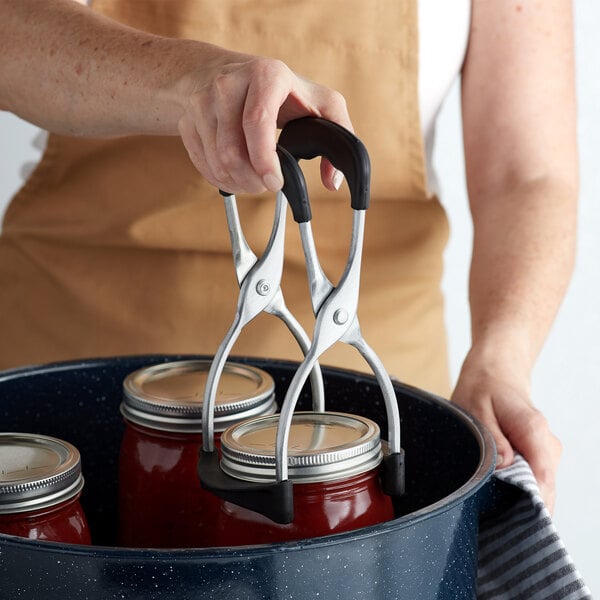
Perfect for moving hot jars to and from the canner
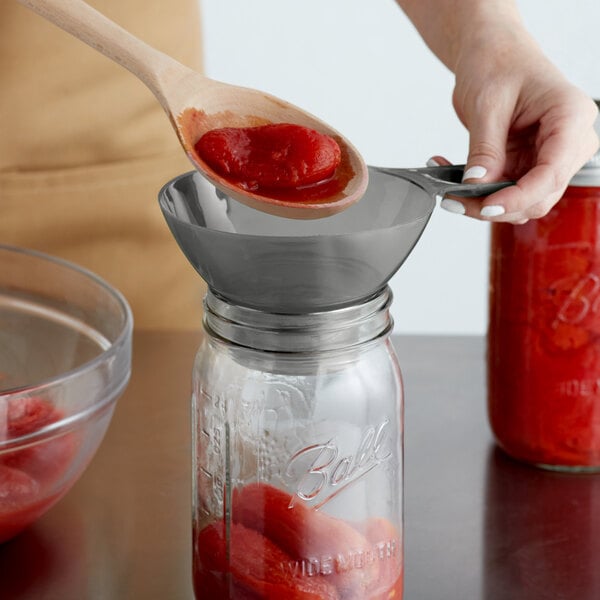
Help prevent spills and messes while filling jars with food

Collapse any air pockets that could prevent the jar from properly sealing
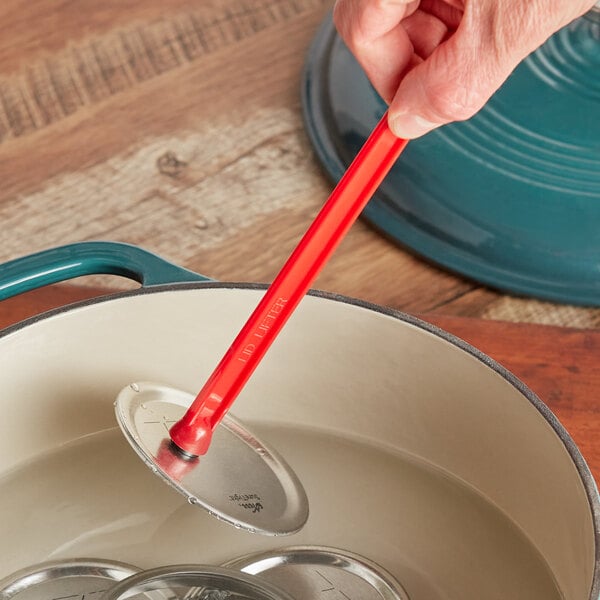
Contain a small magnet on the end to easily extract lids from hot water
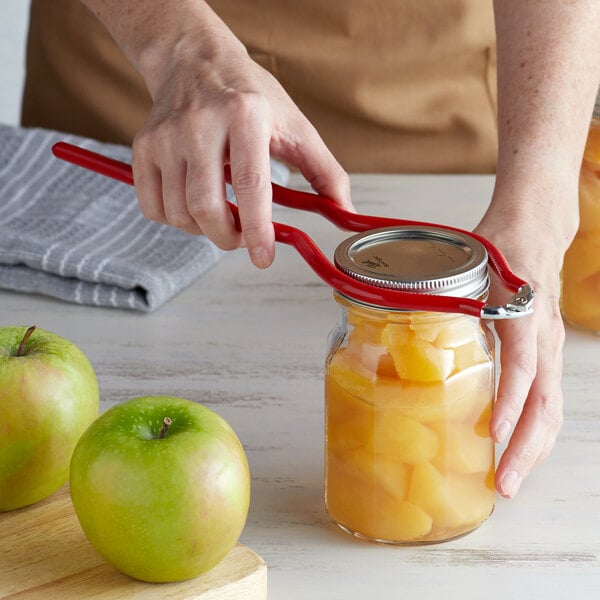
Provide an easy way to tighten and loosen lids, ensuring a tight seal
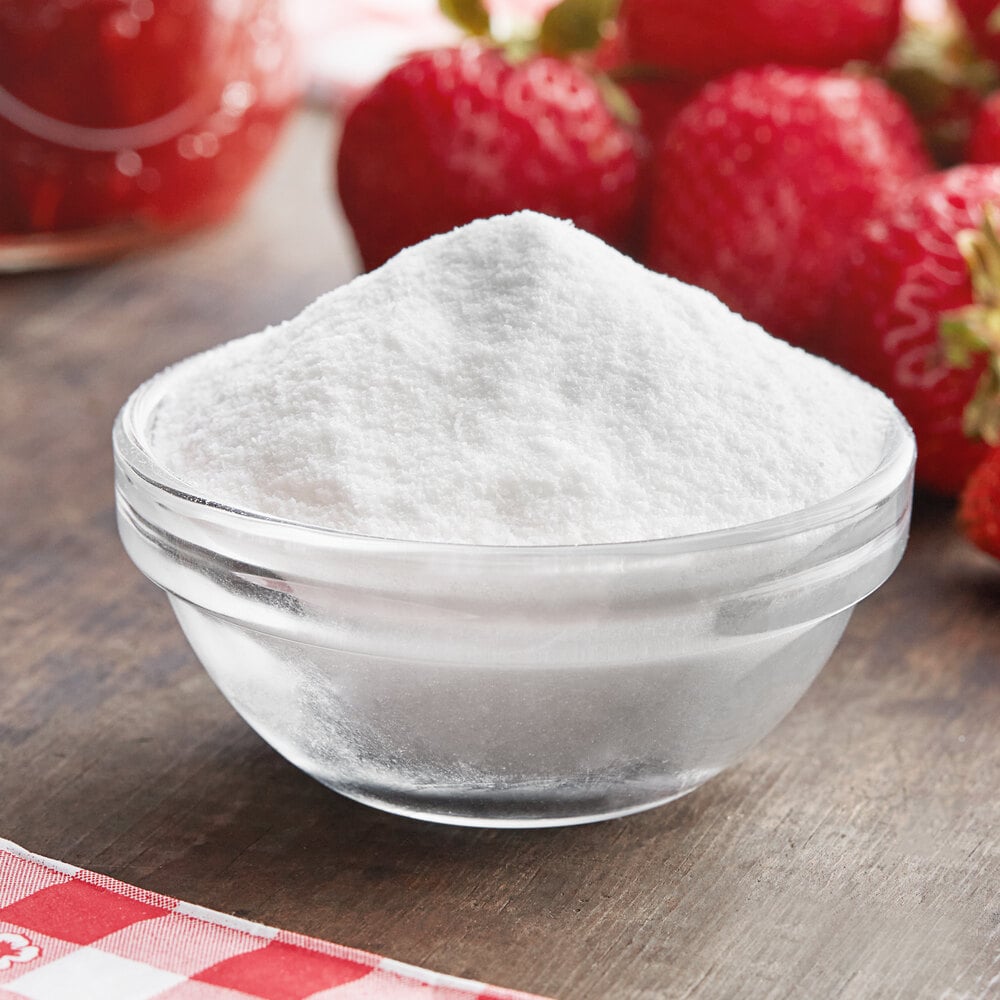
Gels and thickens liquids to the perfect consistency for jam, jelly, and marmalade
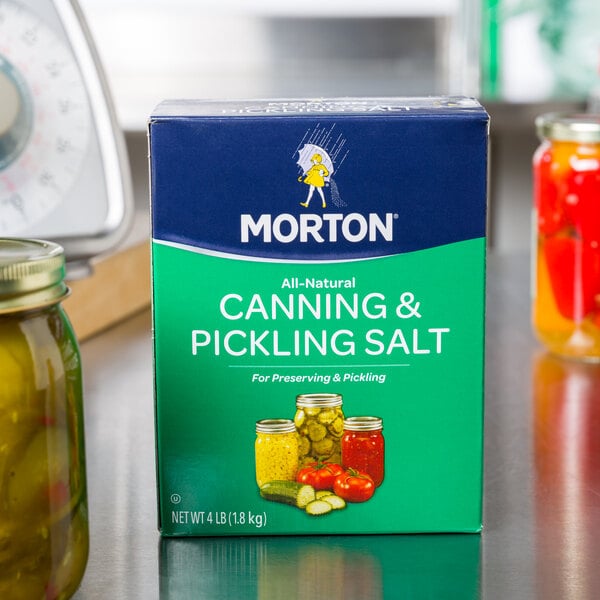
Creates a clear brine that is used to pickle foods

Ensure that jars are processed for the precise time required
Related Resources

What Is Pickling Salt?
Pickling salt, also called canning salt or preserving salt, is a fine-grain salt with no additives. Made of pure sodium chloride, pickling salt doesn't contain the iodine and anticaking agents that are traditionally added to table salt. Because of its purity and its ability to dissolve easily, canning salt is ideal for pickling vegetables and canning and preserving other foods . Canning Salt vs Table Salt Unlike pure canning and pickling salt , table salt contains anticaking agents that keep the salt grains from clumping together. This makes table salt easy to pour and prevents the holes in a salt shaker from becoming clogged. However, because the anticaking additives aren't water soluble, they will not dissolve in pickle brine and will cau

Food Dehydrators Buying Guide
Have you ever wanted to create your own jerky? Or dry citrus for cocktail garnishes? If so, a food dehydrator might be just what your business needs. A dehydrator is a useful tool for creating new menu items and reducing food waste . Our comprehensive dehydrator buying guide will take you through how a dehydrator works, how it differs from an oven, and the various purchasing considerations to help you decide on the best food dehydrator for your needs. Shop All Commercial Food Dehydrators
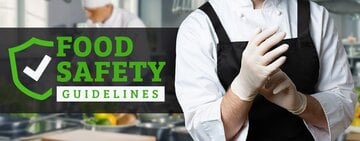
Food Safety Guidelines
Food safety guidelines are put in place to keep customers safe and prevent the risk of a foodborne illness outbreak. Any operation that serves food should establish protocols that meet the legal requirements for safe food handling. In this guide, we'll outline the most important aspects of food safety to help you build an effective program for your business and pass your next health inspection . Click below to learn about important food safety programs: Personal Hygiene Proper Food Handling Cleaning and Sanitizing Pest Control Purchase from Approved Suppliers Food Safety Training Food Safety Guidelines for Restaurants We'll cover the most important aspects of a successful food safety program so you can prevent a foodborne illness outbreak a
- Topics 1352
- Industrial 55
- Troubleshooting Guides 21
- Restaurant Management 128
- Bar Management 55
- Catering Tips 35
- Bakery Management 42
- Food Trucks & Concessions 49
- Advertising & Marketing 37
- Eco-Friendly Tips 11
- Facility Layout & Design 42
- Coffee Shop Tips 28
- Installation & Maintenance 51
- Janitorial & Pest Control 30
- Safety & Sanitation 88
- Startup Tips 104
- Menu Design 10
- Kitchen & Cooking Tips 83
- Hospitality Management 24
- Pizza & Sandwich Shop Tips 36
- Smallwares 37
- Food Prep 89
- Tabletop Items 17
- Disposables 22
- Calculators & Tools 6
- Consumables 52
- Warewashing & Laundry 18
- Cooking Equipment 91
- Food Storage & Refrigeration 51
- Beverage Equipment 34
- Office Supplies 6
- Resource Type
- In-Depth Articles272
- Buying Guides298
- How-Tos94
- Product Reviews77


